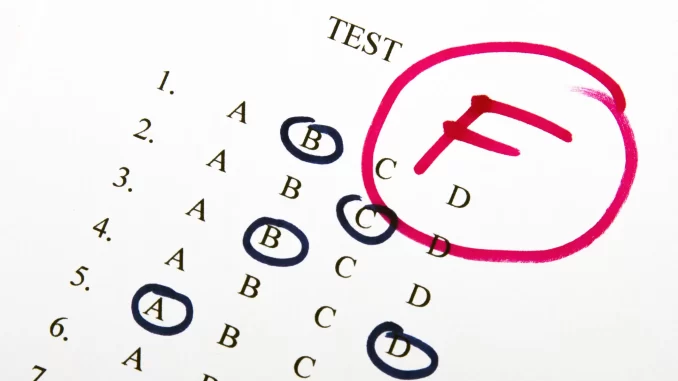
As Seen on Newsmax.com
By Steve Levy
The single most effective way to dramatically reduce poverty in America is to stop forcing children living in poor areas to attend consistently failing and violent schools.
While some states are taking efforts to open up the system by allowing parents to allot their tax dollars toward the school of their choice, many states continue to block these reforms at the behest of powerful teachers unions.
The Center for Cost Effective Government’s recently released white paper suggests it is time for the U.S. Supreme Court to hold that the system relegating poor and minority students to failing schools is a violation of the equal protection rights these children possess under the Constitution.
The court in Espinoza v. Montana (2020) held that if a state establishes a private school funding system it cannot exclude religious schools. However, the court said there was no obligation for a state to allow for a private or charter system in the first instance.
But why should poor kids stuck in failing schools have to rely on a state legislature to free them? Don’t poor minority kids in blue states have the same right to school choice as those fortunate enough to live in red pro-school choice jurisdictions? Don’t poor kids have the same right to a safe and productive private school education as wealthier students do?
The 2009 New Jersey case, Crawford v. Davy, and a 2003 case in New York led to court decisions that invalidated the funding disparities between wealthier and poorer districts.
But rather than breaking up the monopoly public schools maintain, the remedy was to simply demand the legislatures throw more money at the already failing schools.
The Crawford court declined to declare these disparities violated Equal Protection safeguards. They held that officials did not have enough time in 2009 to gauge whether the state and federal reforms just implemented would have a chance to work.
Fifteen years after those so-called reforms, we can definitively state that simply throwing good money after bad has not improved these disparities in student performance.
In fact, since that 2003 New York decision, state aid to education has nearly tripled, yet student performance continues to decline. New York has the highest spending per pupil in the nation at $36,000, and its scores hover in the middle to lower rungs of the national rankings.
In Baltimore’s public schools, 40% of the high schools failed to have a single student pass the math proficiency exam, despite large funding increases — not a single student.
In 1998, New York Gov. George Pataki obtained authorization for charter schools. The caveat is that the number of the schools were capped.
But schools that were authorized have clearly shown that attending a charter school is the clearest way out of poverty that one can envision.
A Stanford study concluded that charter school students scored 7 percentage points higher on the English exam than city schools. In Math, charter students had a 63% pass rate compared to the public school pass rate of 50%.
Black charter students outperformed their public school counterparts 59% versus 40% in English and 61% versus 34% in math.
Hispanic charter students outperformed their public school peers by 16 percentage points in English and by 25 percentage points in math.
Of the 10 states with full or near total school choice, six rank in the top half of the country in Pre-K-12 education.
Equally noteworthy is that in many places where charters have been implemented, the nearby public schools have actually improved. This counterintuitive concept is surely related to the competition forced upon the public school, incentivizing enhanced performance.
Twenty-five of the 28 studies on the topic of charter schools’ effect on public schools found significant positive impact of private school choice competition on student outcomes in public schools.
The prospect of minorities in America being trapped in failing neighborhood public schools districts also deleteriously impacts property values of minorities living there.
Habitat for Humanity noted:
Homes in historically Black neighborhoods are consistently valued at lower rates than those in White neighborhoods. A study by the Brookings Institution estimates that devaluing has caused $156 billion in cumulative losses for Black families as of 2018, exacerbating the wealth gap between white and Black homeowners.
The Michigan Journal of Economics concluded: “Those who live close to highly regarded private schools can typically command higher income values due to their proximity to the private school.”
A New York Times expose stated: “Economists have estimated that a 5% improvement in test scores in suburban schools can raise home prices by 2.5%.”
While only 36% of the parents polled wished to remain in their present public school district, the actual number of students confined to the public schools is 86%.
When courts were evaluating the stark differences in opportunity available for students from different demographic categories in the past, the focus always centered on funding available to the schools. But now that we know changing the funding formula doesn’t work, courts need to focus on how minority children are denied equal opportunity, because racial housing segregation has forced these students into failing schools with no way out.
In 1954, the Supreme Court held that minority children cannot be excluded from their local public school. Seventy years later, the court must hold that minority children should not be forced to attend their failing local school.
Steve Levy is President of Common Sense Strategies, a political consulting firm. He served as Suffolk County Executive, as a NYS Assemblyman, and host of “The Steve Levy Radio Show.” He is the author of “Solutions to America’s Problems” and “Bias in the Media.” www.SteveLevy.info, Twitter @SteveLevyNY, steve@commonsensestrategies.com.

